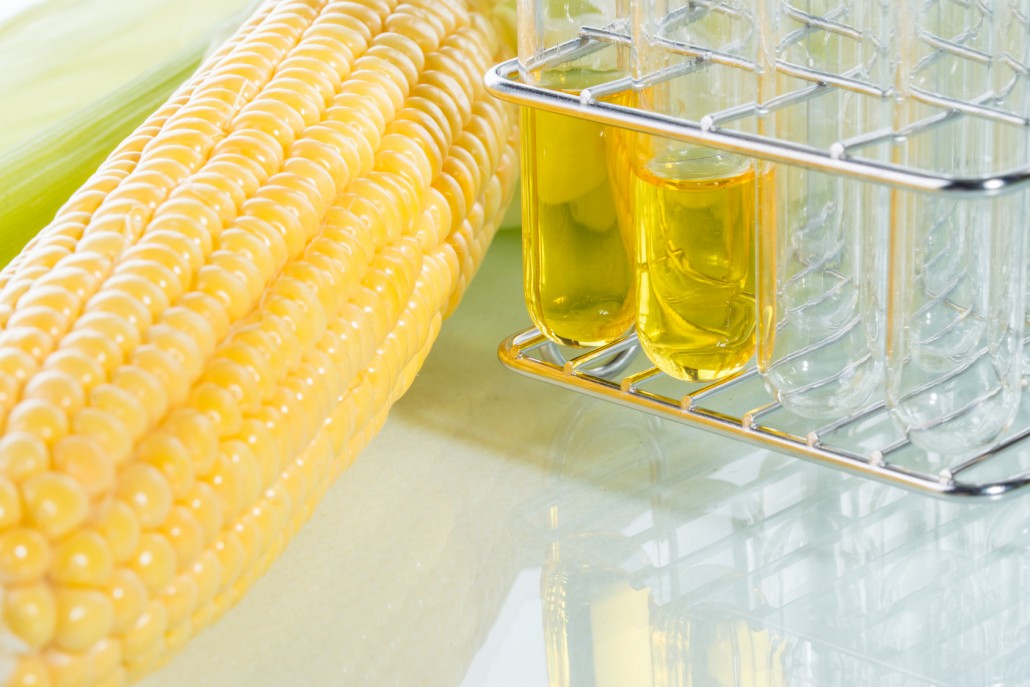Americans are literally being poisoned by a common food additive that’s present in nearly every packaged food and drink we consume today. Things like breakfast cereals, breads, cakes, cookies, package fruit, salad dressings, ketchup, barbeque sauce as well as sodas, juices and sports drinks are literally plagued with it.
Even though this insidious ingredient is fairly new to our food system compared to things like sugar and refined flour, over-consumption by the average American has skyrocketed in the past forty years from just 3 pounds per person to over 60 pounds today because of the way this additive is being so widely overused in commercial foods.
In fact, this additive is now being touted by the processed food industry as one of the most successful food ingredients in modern history. And because of it many nutrition experts believe our nation’s prevalence of obesity, diabetes, hypertension, heart disease and many other metabolic abnormalities will start ramping much faster, affecting an even larger percentage of our population, including children.
The name of this toxic anomaly is none other than High Fructose Corn Syrup (HFCS)
High Fructose Corn Syrup was relatively obscure for the first number of years that it entered our food supply chain in the early 1970s. However, its popularity quickly caught on as being the most desirable sweetener used because food manufacturer’s realized that it was equally as sweet as table sugar, blended well with other foods, helped foods maintain a longer shelf life, and was much less expensive than other sweeteners -thanks to government subsidies on corn.
Having a “so called” similar composition compared to sugar suggested that it would be metabolized in a like manner. The problem was its safety was never seriously doubted because expert scientific panels in each preceding decade since its introduction drew the same conclusion that HFCS posed no significant health risk. (1)
Although considerable speculation started circulating in the 80’s (by a number of health advocates) that HFCS may be responsible for a number of metabolic abnormalities, convincing proof that it was a significant health risk was never fully established. So, it came as a great surprise to many when, seemingly overnight, high fructose corn syrup was transformed from an ordinary, harmless food ingredient into a principal area of focus for scientists, journalists, and consumers concerned about the growing incidence of obesity in the United States and around the world. (2)
Even as the debate continues today about the food industries benefit and the consumer’s harm or lack thereof of high fructose corn syrup in our diet we are completely missing the obvious. The average American –almost unknowingly- has increased their consumption of this ambiguous food additive from nearly zero to over 60 pounds per person, per year, in a relatively short amount of time.
So, could it be just by coincidence that during this same time period obesity has more than tripled and the incidence of type II diabetes has risen to a level seven times what it had been? The facts connecting the two are fairly substantial and nearly impossible to ignore, so when people ask me, “Is high fructose corn syrup really that bad for you?” My answer to this question is an unequivocal “YES!” – At the amount we now consume it’s not only dangerous but very highly toxic.
For starters, just to set the record straight, HFCS is a non-nutrient bearing, calorie-providing additive, used to sweeten many of the processed foods and beverages that have now become staples in our everyday diet. What this means is, HFCS, being a universal food additive, supplies zero nutrients to the body, having absolutely no physiological value.
When high fructose corn syrup goes through its chemical process the two naturally bound simple sugars (glucose and fructose) become separated. And because these two simple sugars react quite differently in our body this allows the fructose portion to mainline directly into your liver, creating a factory of fat production, leading to hormonal disruption, chronic inflammation and a host of chronic health issues.
In fact, many health experts are now sighting HFCS as a main catalyst for one of the fastest growing health conditions in America today. This chronic disease is called Non-Alcoholic Fatty Liver Disease (NAFLD) and although it’s rarely talked about, it now affects nearly 1/3 of the entire American population, yet few even know it exists. NAFLD, in turn, leads to pre-diabetes and Type II Diabetes.
Sadly, in addition to the enormous load of pure fructose that HFCS has, it also comes attached with other chemical toxins. One such chemical contaminant is mercury. Trace amounts of this lethal poison are transferred directly into the foods and beverages that contain HFCS.
Now, it may seem a little pretentious to claim this as a major problem if eaten occasionally, but again, the average adult consumes more than 20 teaspoons per day and the average teenager is upwards of 34 teaspoons a day. Over time, these heavy metals accumulate in the body, causing serious health risks.
Here are 6 Evidence based reason to avoid HFCS
1. HFCS requires no digestion
There is no digestion required for high fructose corn syrup. Therefore, because of the way its metabolized 100 percent of the metabolic process rests on your liver. HFCS is immediately main-lined directly into the liver triggering the production of triglycerides and cholesterol, causing liver damage. (3)
2. HFCS Raises Bad Cholesterol and Triglycerides
Every cell in your body, including your brain, utilizes glucose. Therefore, much of it can be “burned up” after being consumed. By contrast, high fructose corn syrup is turned into free fatty acids, the damaging type of cholesterol and triglycerides, which get stored as fat. (4, 5)
3. HFCS Causes Insulin Resistance and (NAFLD)
Fatty acids created during High Fructose Corn Syrup metabolism accumulate as fat deposits in your liver and skeletal muscle tissues. This, in turn, causes two major symptoms: one is called insulin resistance, which now affects 1 in 3 Americans, and the other is called Non-alcoholic Fatty Liver Disease (NAFLD) which affects nearly 30 percent of the entire American population. (6, 7, 8, 9)
4. HFCS Increases Body Fat Storage
High Fructose Corn Syrup is the most lipophilic carbohydrate. Simply put HFCS converts to Glycerol-3-Phosphate (G3P) which is then directly used to turn fatty acids into triglycerides. The more G3P you have in your body, the more fat your body will store.
5. HFCS Produces Hormonal Interferences
High Fructose Corn Syrup interferes with the brain’s communication with leptin, a hormone which plays a key role in regulating appetite. This miscommunication negates the feeling of being satiated, resulting in overeating. (10, 11)
6. HFCS is a Marker for Poor Quality Food
High Fructose Corn Syrup is a marker for poor-quality, nutritionally-depleted, processed industrial food full of empty calories and artificial ingredients. If you find high fructose corn syrup on the label you can be sure it is not a whole, real, fresh food full of fiber, vitamins, minerals, phytonutrients, and antioxidants.
How to Avoid High Fructose Corn Syrup
The best way to avoid the dangers of High Fructose Corn Syrup and all of its adverse effects is to avoid processed or pre-packaged foods and drinks. Instead, focus on whole ‘real food’ choices consisting of quality lean meats, poultry and fish, nuts and seeds, and plenty of low glycemic fruits and vegetables.
Common foods that contain High Fructose Corn Syrup
Soft Drinks
It’s no surprise to most of us that soda is chock full of high fructose corn syrup. To those who aren’t used to it, the stuff can be almost sickeningly sweet. Even diet varieties can have a large amount of this sweetener. Add the fact that soda machines can be found on the street corner, in the lobbies of buildings, and in almost any public space, and it’s easy to see why obesity and sugar-related conditions are such a problem in today’s world.
Sauces and Salad Dressings
Some of us don’t think about the amount of sweetener in items like barbecue sauce, steak sauce, salad dressing and other condiments, but on a closer look, it seems that even the flavor for our salads is often provided by high fructose corn syrup.
Breads
In addition to a surprisingly high amount of sodium in many bread and pastry products, there can also be a lot of high fructose corn syrup, especially if the items are processed and distributed nationally.
Fruits and Vegetables
Although this is a rarer phenomenon, high fructose corn syrup has even crept into those categories that we see as most healthy. The prime candidates for HFCS in fruits and vegetables are baked beans and pickles, but other prepared foods can include the sweetener as well, so check the label if fruits and vegetables are packaged in liquid.
Breakfast Cereals and Bars
Consumers who aren’t careful may be starting their day out with a hefty dose of high fructose corn syrup. It might not be surprising that the sweetest cereals contain HFCS, but even those that don’t seem sweet to the tongue can still have this substance included in the ingredient list.
Processed Snacks
There are other items that the average consumer wouldn’t think of as HFCS candidates. Look at the labels for things like breaded meats or processed potato items, and make sure that the sweetener is not lurking somewhere on the label.
The above are all great examples of how this mass-produced and subsidized food element that many see as unhealthy is making its way into the average everyday diet unannounced.
So now I challenge you to go into your kitchen, go in the cupboard and refrigerator, and look at every single label. And I want you to count how many products you have right now in your house that contain High Fructose Corn Syrup. I will guarantee that it will not only surprise you, but possibly even shock you.
Bottom line:
If you’re looking to stay healthy, lose weight easily and rid your body of chronic issues, one of the single most important steps you can take is to completely eliminate High Fructose Corn Syrup (HFCS) from your diet and equally or more importantly from your children’s diets. Most parents don’t even realize that HFCS can actually be more toxic to the liver than alcohol, especially in the amounts we’re consuming today, so my question is, why are we allowing our own children to consume this poison?


